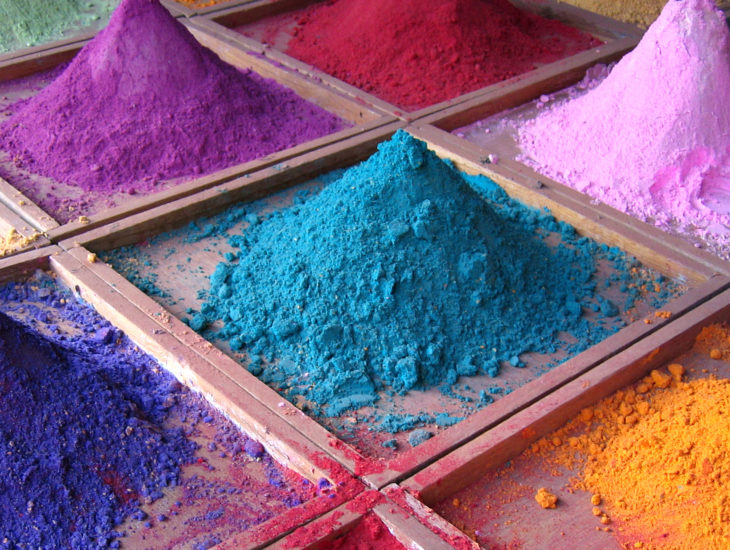
Non-Toxic Tie Dye That Doesn’t Fade: Fiber Reactive Dyes

A question we often get is "What kind of dyes do you use?". People want to know if they're non-toxic, environmentally-friendly, and colorfast -- and we're happy to tell you!
What Are Fiber-Reactive Dyes?
All of our Tie Dye Designs are created using non-toxic, bright and vibrantly colored Fiber Reactive Dyes.
Fiber-reactive dyes are primarily used on natural fibers like cotton, linen, rayon, and other cellulose-derived materials. What makes them unique is their ability to chemically bond with the fibers, creating a permanent color that's resistant to fading – which is why we’ve chosen this type of dye to make our tie-dyes.
Key characteristics of fiber-reactive dyes include:
●
Chemical
Reactivity: These dyes contain groups that
chemically react with hydroxyl groups present in cellulose fibers. This reaction forms a
covalent bond between the dye molecules and the fibers, ensuring excellent resistance to fading
from both the wash and sunlight.
●
Vibrant
Colors: Fiber-reactive dyes can produce intense
colors due to their ability to form strong chemical bonds with the fibers.
●
Environmentally
Friendly: Compared to many other dyes, fiber-reactive dyes are environmentally
friendly. We dye at low temperatures and
use a less water intensive process. The chemical bonding reduces the need for harsh chemicals in the
dyeing process.
● Durability: Once the dye has reacted and formed bonds with the fibers, it becomes an integral part of the fabric. This makes our vibrant color resistant to fading through washing and exposure to sunlight.
The Chemistry of Fiber-Reactive Dyes
We find the chemistry of fiber-reactive dyes fascinating. Feel free to nerd out with us for a few minutes while taking a more in depth look at the chemistry behind these dyes.
● Dye Structure: Fiber-reactive dyes typically contain one or more reactive groups, such as chlorotriazine (chlorine-based), vinyl sulfone, or monochlorotriazinyl. These reactive groups are essential for forming covalent bonds with the hydroxyl (-OH) groups present in cellulose fibers.
● Activation: The dyeing process generally requires an alkaline environment to activate the reactive groups on the dye molecules. This is achieved by using a mild alkali, such as sodium carbonate (aka soda ash), to raise the pH of the dye bath.
● Formation of Covalent Bonds: Once the dye molecules are activated, they chemically react with the cellulose fibers. This reaction involves nucleophilic substitution. Nucleophilic substitution is like a graceful dance where molecules swap partners, creating new bonds and forming different molecules.
● Wash and Light Fastness: The covalent bonds formed between the dye and the fiber are incredibly stable, providing excellent wash and light fastness, so color remains vibrant even after repeated washing and exposure to sunlight.
● Multiple Dye Sites: Cellulose fibers have multiple hydroxyl groups along their polymer chains, providing numerous sites for dye molecule attachment. This allows for deep penetration of the dye into the fabric, resulting in uniform coloration throughout the material.
We love our craft and try to understand everything we can about the dye process. This helps us deliver great shirts that we hope you’ll love!
Tie Dye Wholesaler - June 11, 2025